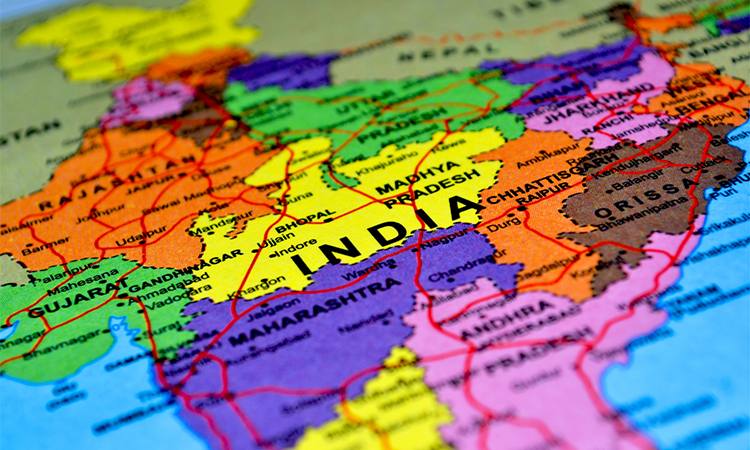
Applaud! Applaud! Applaud! We are now the largest country in the world … Oh wait … But that's in terms of population. Sooooo … Should we be happy? Or Sad? Is it a boon or bane? How does it affect the country? Let's just try to figure out what it means for us to be the world's most populous country and apparently the youngest one too.
The year 2023 saw India taking over China as the most populous country in the world. According to data displayed on UN's World Population dashboard, India crossed 1.428 billion in terms of population - slightly higher than China's 1.425 billion people [1].
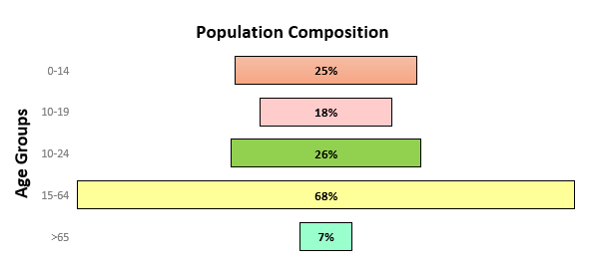
Figure 1: Composition of the Indian population
Source: Economic Times, EFL Research
If experts are to be believed, we still have at least 3 decades of population growth ahead of us … it is expected to peak out at 165 billion before we begin to see any decline. Now the question arises, is this good or bad for the country? What will, being the most populous country in the world, mean for India? Will there be any advantages? Or will this bring in more challenges for the country?
Let's try to address these concerns one by one.
India is witnessing a consistent population growth which, along with depopulation in China, has hurled India towards assuming the throne as the most populous country on the earth.
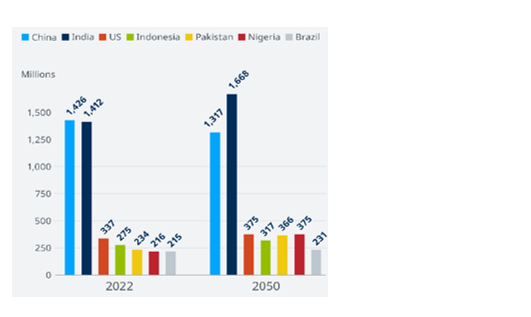
Figure 2: Predicted rise in Indian Population
Source: UN Department of Economic & Social Affairs
At present, India's population is estimated to be 1.45 billion, and is anticipated to increase further to 1.69 billion, reaching its peak by 2060 [2].
A simple look at the population size alone, will not be very helpful in extrapolating or deducing India's future. However, a deeper dive into the changing aspects of India's demographic dynamics reveals that it has become essential for the country's leaders to move fast if any meaningful changes are to be brought by exploiting the favorable age structure of the nation's population which will eventually help in maximizing opportunities available to India for enhanced economic growth and development [3].
Population growth affects several phenomena including the age structure of a country's population, international migration, economic inequality, and the size of a country's work force [4]. If we are to believe in theories of Economics, population growth has certain advantages. A growing population leads to the expansion of the labor force and hence an expansion in the volume of products they manufacture and services they provide.
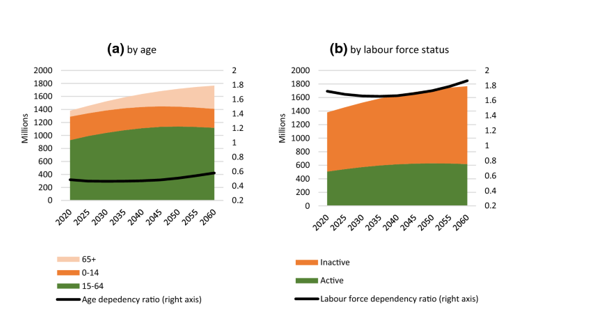
Figure 3: Projected Population & Labor Force
Source: Labour Force Projections in India Until 2060 and Implications for the Demographic Dividend [5]
But this expanding labor force will have to be provided for. Hence there will be greater consumption demand and to meet that demand manufacturing and services sectors will grow.
It must be kept in mind that the resources we use are finite. So, as the population grows there would be more people demanding the same amount of resources – people will compete amongst themselves for acquisition, eventually bidding up the price. Demand will outpace supply as it is not possible to scale up supply at a similar pace as demand. There would be a capacity constraint – a maximum, beyond which we cannot produce and an optimum beyond which we will not produce to maintain the quality of products and to utilize the installed capacity in an efficient and productive way.
The expanding population will also increase the urgency of creating employment as more and more heads come under the workable age category and thus put pressure on by the incessant growth in population. By 2047, our country will have nearly 1.1 billion people in the working age group (15-64 years), which is almost 1.6 times the total population of Europe. Regardless of steady economic growth, it is most likely that India will have a tough time providing adequate employment opportunities that can cater to the entire young population joining the national workforce [6]. This is one of the major reasons why there is so much emphasis on employment generation.
Manufacturing sector is a better and bigger employment generator than the service sector. But Indian growth story so far has been service led. The focus is now shifting to manufacturing which will be an employment generator as also a demand driver that will propel economic growth and catapult the country to the 3rd position in the world in terms of GDP. The onus is on Prime Minister Narendra Modi's government to generate employment for the growing workforce as millions of people enter the active labor force due to an increasing number of individuals move away from farm jobs – a fallout of increased urbanization.
With nearly 50% of the population being under the age of 30, India is set to be the world's fastest-growing major economy in the near future. But creating so many jobs so soon is a huge challenge. A few sectors such as tourism that are witnessing remarkable growth promise to create jobs as there is a huge trickle-down effect. The India shining story reinforced by inclusive development will only come to life if and when there comes a transformative breakthrough in the country's manufacturing sector. Empowering the Indian SMEs, and bringing in reforms to the agricultural sector to bring it to mainline growth euphoria and raise it from its really long slumber, are some of the necessary steps towards providing fillip to the process of employment generation. India's rapid population growth puts a lot of pressure on the country's resources and services, which more often than leads to environmental degradation, poverty, and inequality. India is now the home to about a 6th of the world's population. However, there has been a paradigm shift in the country's perspective on the population growth mainly on account of decline in the rate of growth.
According to Population Foundation of India, an NGO backed by United Nations Population Fund (UNFPA), at present, women in reproductive age (15 - 49 years) have a Total Fertility Rate (TFR) of 2.0, which is less than the replacement level of 2.1. Replacement level refers to the point at which a population has the exact number of births necessary to replace itself from the previous generation to the next. That means 2 children will replace 2 parents [7]. Fertility level declining below 2 would mean the population will start declining. There has been a consistent decline in fertility rates across almost every socio-economic groups within the country, except for 5 states - Bihar, Meghalaya, Uttar Pradesh, Jharkhand and Manipur [8, 9]. India has also experienced a steady decline in crude birth rates [7].
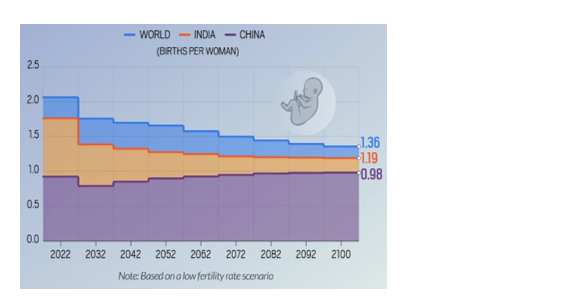
Figure 4: Fertility Rate in India - Declining Trend
Source: India Today, Population Division of the US
In general, people are increasingly optimistic that this large cohort of young people will drive further economic growth. But, whether the growing population is a boon or a bane will depend on how the country manages its own immensity. It also must be kept in mind that the youngest population will also grow old and will need adequate old-age planning – something like social security and retirement benefits or pension funds, not to mention higher need for healthcare services, old age homes, massive volume of care giving force and medical insurance. It's a huge volume of financial activity that needs to be taken care of and taken care of now. This again creates significant opportunity for both the manufacturing and service sectors to grow.
Over the past two years, value chains across the world have been witnessing significant reconfiguration on the back of incipient technologies, worsening global warming and the stronger need for sustainable development. India is fast emerging as a key contender for capturing this newly developing space. The growing population points towards not just a robust but also a rapidly growing consumer market at home which means that a larger share of manufactured product will now have to be distributed within its geographical boundaries. We must also acknowledge the Indian Government's inclination towards boosting the manufacturing sector which is crucial for job-creation for a country having a growing working-age population. Keeping in line the GoI has launched a number of specific initiatives such as PLI that have given a massive boost to the manufacturing sector and are expected to keep the sector rolling for the years to come. At present the value added by the manufacturing sector to our GDP is low [10].
The Indian government has also taken the initiative to simplify the labor laws and these alterations will confer extensive benefits across industries. The government has been constantly making efforts towards enhancing the ‘Ease of Doing Business' in India. What is most important is that the Indian Government has put a lot of emphasis on development of infrastructure to create an environment that could be most conducive to the growth in both manufacturing and services sector and can help to create the employment necessary to sustain the growing population.
We are now on the right trajectory to transforming into a preferred manufacturing destination. However, India still has to go really a long way to go before it can prove that being the most populous country in the world has not been detrimental to its progress but has actually helped the country forge its way forward. This is possible only through adoption and successful implementation of meticulously planned strategic policies across sectors to enhance not only enhance scale (to reap the benefits of scale economies) but also competitiveness. It has become imperative for the policymakers to consider the challenges that will be faced while trying to integrate global value chains (GVC) into the development process. It will help the manufacturing sector gain operational excellence and foster technology and knowledge transfer thus providing better access to capital and inputs along value chains. While such integration will enable the economy to make the necessary quantum leap, there will always be the possibility that global shocks such as geopolitical turmoil, technology disruptions, pandemics, etc. can always throw things out of gear. What affects other countries would also affect us – adversely or favorably will depend on the individual situation. Supply chain shocks are thus more tangible now. Bigger exposures create a lot of vulnerabilities.
A key concern about participation in GVCs is that while it increases productivity, it can potentially bring down the demand for labor in such sectors as agriculture – a key engagement of the masses in rural India. This might interfere with the creation of jobs in India and the country will need to cope with the challenge of employing the displaced population that is essentially limited in terms of skills as it has to keep employing the growing skilled youth population, side by side.
The bottomline is that if the growing population is to be a boon and not a bane for the country, we need to see significant employment generation, greater supply of manufactured products to cater to the growing needs and wants. We are headed for tougher times and the only thing certain about this time is the unabated growth of population. But this population can become our key weapon in propelling the country's economic growth if channelized effectively. Education, opportunities for upskilling, affordability of essential services such as healthcare and most importantly adequate job creation and growth in manufacturing to sustain the population.
References
1. ET Online, "India overtakes China to become world's most populous nation with with 1.428 billion people: UN," 20 Apr 2023. [Online]. Available: https://economictimes.indiatimes.com/news/india/india-population-to-surpass-china-mid-year-un-estimates/articleshow/99605379.cms?from=mdr. [Accessed 24 Jun 2024].
2. PTI, "India's population to peak in early 2060s to 1.7 billion before declining: United Nations," 12 Jul 2024. [Online]. Available: https://www.thehindu.com/news/national/indias-population-to-peak-in-early-2060s-to-17-billion-before-declining-united-nations/article68395623.ece. [Accessed 12 Jul 2024].
3. J. D. Sciubba, "What India Becoming the World's Most Populous Country Means: Center For Strategic & International Studies (CSIS)," 28 Apr 2023. [Online]. Available: https://www.csis.org/analysis/what-india-becoming-worlds-most-populous-country-means. [Accessed 08 Jul 2024].
4. E. Wesley and F. Peterson, "The Role of Population in Economic Growth," SAGE Open, pp. 1-15, 2017.
5. G. Marois, E. Zhelenkova and B. Ali, "Labour Force Projections in India Until 2060 and Implications for the Demographic Dividend," Social Indicators Research, vol. 164, pp. 477-497, 29 Jun 2022.
6. N. Sahai and A. Singh, "How India can truly reap benefits of its demographic dividend in the next 25 years," 05 Mar 2023. [Online]. Available: https://economictimes.indiatimes.com/news/economy/policy/the-three-elements-that-india-needs-to-fix-in-the-next-25-years-to-reap-demographic-benefits/articleshow/98423790.cms?utm_source=contentofinterest&utm_medium=text&utm_campaign=cppst. [Accessed 08 Jul 2024].
7. Population Foundation of India, "India's Population Growth And Policy Implications," Population Foundation of India & United Nations Population Fund (UNFPA), New Delhi, 2023.
8. DristiIAS, "Replacement Level Fertility," 29 Jul 2022. [Online]. Available: https://www.drishtiias.com/daily-updates/daily-news-analysis/replacement-level-fertility. [Accessed 09 Jul 2024].
9. PIB, "Role of National Family Health Survey (NFHS)," 02 Aug 2022. [Online]. Available: https://pib.gov.in/PressReleasePage.aspx?PRID=1847431. [Accessed 09 Jul 2024].
10. D. A. Kapoor and M. Ajith, "Indian economy at its tipping point: IFC," 23 May 2024. [Online]. Available: https://www.competitiveness.in/indian-economy-at-its-tipping-point/. [Accessed 10 Jul 2024].



